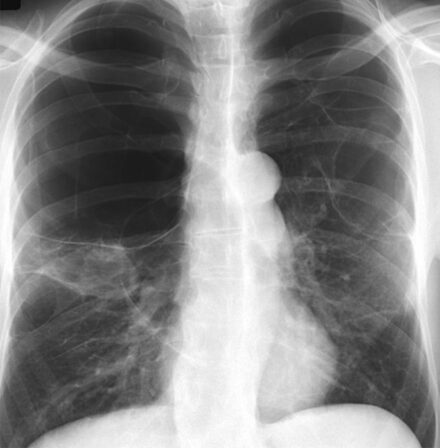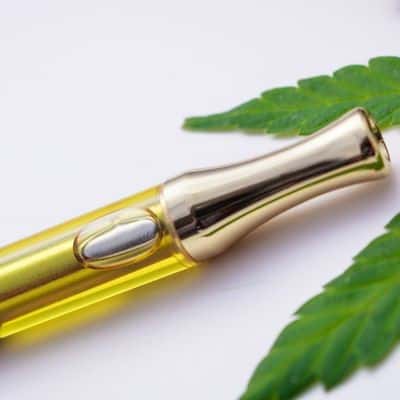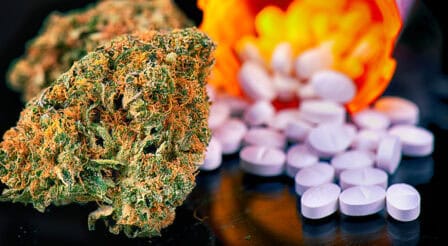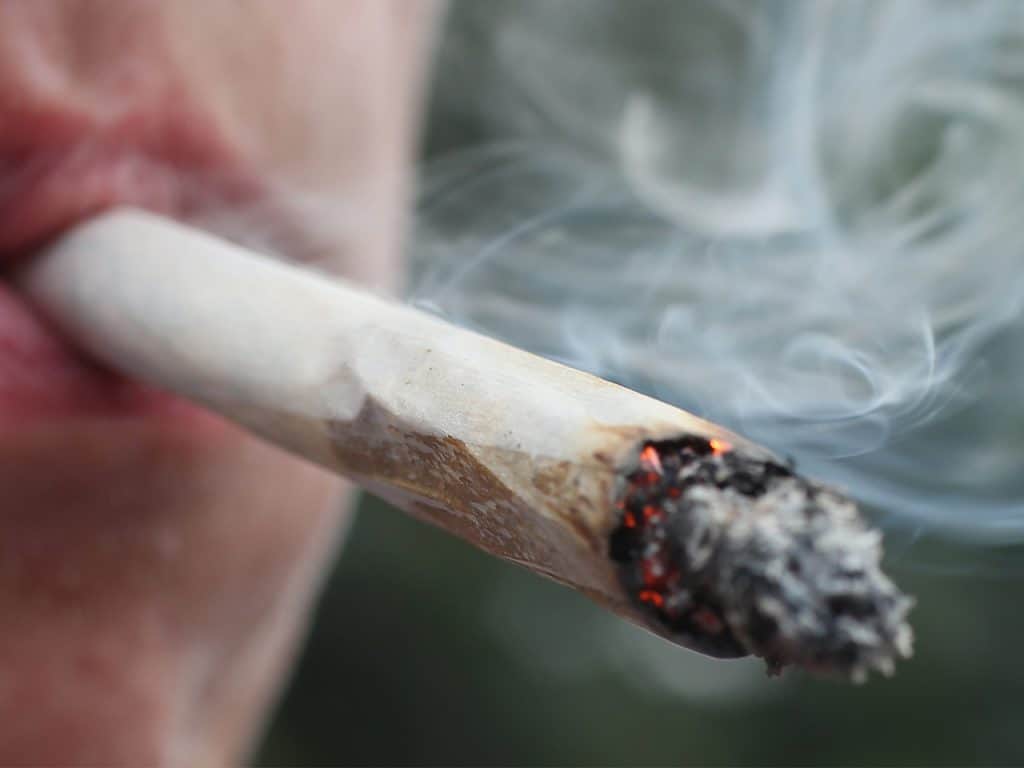What are the Side Effects of Smoking Weed as Medication?
What are the side effects of smoking weed? Do the benefits of smoking counter studies showing a higher risk of heart attack? It is often said, ‘Someone dies of a prescription drug overdose every 19 minutes.’ To date, no one has ever overdosed on weed. People widely see grass as being much safer than alcohol and other drugs. Despite its relatively clean safety profile, cannabis remains on the FDA Schedule I narcotic list. Indeed, tetrahydrocannabinol (THC), the primary psychoactive compound in cannabis, can exacerbate or trigger certain mental health conditions, especially with frequent or high-dose use. So, what are the side effects of smoking pot for medical purposes? Some of the most notable effects include:
Smoking marijuana can cause a range of side effects, which can vary depending on the individual, the strain, and the amount consumed. Here are some common signs of side effects:
Short-Term Side Effects
Increased heart rate – May lead to palpitations or an elevated risk of heart issues in some people.
Dry mouth and dry eyes – Often referred to as “cottonmouth.”
Impaired memory and concentration – Short-term memory loss and difficulty focusing.
Dizziness or lightheadedness, especially when standing up quickly.
Paranoia or anxiety – Some users experience heightened worry or panic attacks.
Hallucinations or altered perception – Distorted sense of time and reality.
Coordination issues – Difficulty with motor skills and reaction time.
Increased appetite – Commonly known as "the munchies."
Long-Term Side Effects
Respiratory issues – Frequent smoking may lead to coughing, phlegm buildup, or bronchitis-like symptoms.
Cognitive effects – Long-term use may impact memory, learning, and attention span.
Mental health risks – Some users may develop or worsen conditions like anxiety, depression, or psychosis.
Dependence or withdrawal symptoms – Irritability, insomnia, decreased appetite, or mood swings when stopping use.
If you or someone you know is experiencing negative effects, it may be worth reconsidering usage habits or consulting a medical professional.
Herb does affect the brain and can lead to both physical and psychologic dependence. This dependence can be seen, chiefly in marijuana smokers who start at a younger age. Cannabis use disorder is a real and significant problem. Chronic use of large amounts of high potency weed strains may play an adverse role in brain development.
Heart Damage
Weed users have a rise in resting heart rate and a lowering of their blood pressure. Their blood vessels also dilate for hours after ingestion. These effects stress the heart and make it work harder. This added workload can lead to chest pain in marijuana users with heart disease. Research suggests that the risk of a heart attack is higher after smoking weed. So, those with heart disease need to use caution when using grass. One study finds pot users at much higher risk for stroke than non-users.
Physical effects of Indica or Sativa climax in 30 minutes. The increased heart rate slowly subsides after about 4 hours, instead of ingesting edibles, droplets, and other methods. The THC and CBD pass through the digestive system, taking 30 minutes to 2 hours. When consuming non-smokable forms, the effects can last up to 8 hours. Edible effects last longer than those of smoking.

Lung Problems
The Alcohol and Drug Abuse Institute sees pot as akin to tobacco. Smokers of both expose themselves to a similar range of chemicals. The lung effects of tobacco smoke compared to the side effects of smoking weed remain unclear. Long-term use can increase the risk of severe lung problems, including injury to large airway cells, which may cause chronic or acute bronchitis. Cough with phlegm and wheeze are other effects. Chronic pot smokers who are not active have more symptoms. Evidence suggests users who exercise and smoke pot have fewer lung symptoms.
Studies have shown that weed smoking doesn’t obstruct lung airflow like tobacco. Smoking weed may increase the forced vital capacity (FVC). However, more evidence is needed to confirm and clarify this finding. So far, there’s not much research comparing secondhand weed smoke to tobacco smoke. Toxins and tar found in weed smoke have raised concerns — this is about exposure among children, asthmatics, and other high-risk groups.
Can a Blunt Cause a Side Effect of Smoking Pot?
People using high doses of weed and tobacco together may have an increased risk of marijuana addiction. This credit is likely the result of smoking tobacco rather than weed smoke. Pot has the lowest dependency risk of all the drugs used for recreation. This risk includes tobacco use. Also, cannabis may help the opioid crisis. States with medical weed see a decrease in deaths related to opioids.
Smoking weed can harm the immune system and our ability to fight disease. Those who have weak immune systems, such as HIV infection, are at high risk.
Researchers have not found any clear link between marijuana smoking and lung cancer. Studies on secondhand marijuana smoke are also inconclusive.

Social Anxiety Disorders
‘SAD’ is one of the top three most common mental health disorders. SAD patients have fear and anxiety related to social situations. Self-conscious persons second-guess themselves, wondering if others are judging them. This persistent doubt in everyday situations often turns obsessive. Social anxiety disorder leads to awkward social situations. It takes a toll with nausea and vomiting, sweating, or difficulty talking. Symptoms of anxiety interfere with meeting new people or keeping friends. Conversing, eating, or drinking in public can provoke severe anxiety.
Many people turn to cannabis to cope with their social anxiety fears. Despite this, weed puts them at a high risk of developing poor mental health problems. Some studies have seen a higher risk of psychiatric disorders. Routine use of pot can make issues such as depression and anxiety worse. Research shows higher rates of schizophrenic psychosis. The reasons behind these links are unclear. Again, the amount of weed, age at first use, and genetics may all play a role. Some people with social anxiety may be better off with other ways to cope.
Paranoia as a Side Effect of Smoking Weed
The THC in weed can lead users to feel paranoid. Smoking small amounts of THC is linked with its treatment effects. However, they show opposite properties with higher amounts. This biphasic response is not unlike other drugs with different thresholds. Tolerance likely depends on several factors. The brain’s wiring in each user and the amount of drug used may play a role. CBD shows less of this effect. Smoking, vaping, and dabbing are the quickest ways for cannabis to work. Smoke enters the bloodstream after passing the blood-brain barrier (BBB). Users feel the psychoactive effects of whole-plant THC in less than a minute. These effects taper off sooner than with oral or topical delivery.

Memory Loss and Decrease in Motor Response
Many pot users smoke to relax and forget about their problems. Studies show that chronic weed use impairs short-term memory. The more pot you smoke, the worse your working memory may get. Working memory is vital for mental focus and learning. It allows essential parts of the brain to process and remember new information. It is short-term recall for new items, i.e., phone numbers or names. We can store these for a few minutes or a few hours. A 2016 study published in JAMA Internal Medicine looked at long-term smokers. Users smoking weed daily for five years or more did worse on word memory tests. The more weed they smoked, the worse their word recall was.
The National Institute on Drug Abuse reports that impaired motor coordination and reaction time are two side effects of smoking weed. This impairment carries warnings to avoid driving or operating machinery.

Low Testosterone / Appetite Changes / and Poor Decisions
Some studies show that high levels of THC cause more moderate levels of testosterone. These levels generally return to normal when users stop their weed use. Low testosterone can lead to fatigue, weight gain, and a low sex drive. A higher estrogen level may raise the risk of breast enlargement in men. This change is one of the most unwanted after-effects of smoking marijuana. Higher estrogen levels may also increase the risk of heart problems and stroke.
An ingredient in marijuana cannabinoids affects appetite cells in the brain, causing feelings of hunger. These changes can lead to the ‘munchies’ or weight gain. There is some evidence that cannabis users may experience both appetite and weight loss.
Many users think they keep perfect mental function when they are high. Most people have a different thought process when they are 'high.' This altered state does not lend itself to making the best decisions. Driving under the influence of weed can be just as bad as with alcohol.
Secondhand Marijuana Smoke
With the known risk of secondhand exposure to cigarette smoke, many wonder about the effects of exposure to secondhand marijuana smoke. When non-cannabis smokers share space in a well ventilated room with casual weed smokers, their blood THC levels, although positive, are still low enough to pass a drug test. On the other hand, non-users exposed to high amounts of THC smoke in poorly ventilated areas may report mild subjective effects, or 'contact high', and show some impairment on motor tasks. Of note, THC can be found in the breast milk of lactating women subjected to cannabis smoke.
Higher Potency Strains
Weed strains have markedly higher rates of THC compared to pot from just 20 years ago. Again, using these strains may be a problem in the hands of younger users.
Are There Side Effects of Cannabis Smoking with a Vape Pen?
Until recently, vaporizers were thought to be a healthy way to smoke weed. Many states are now reporting a vape pen-related lung disease. These deaths have turned this 'healthy' notion on its ear. Let's first dig into the impact of smoking weed and the smoking devices used.
It’s essential to understand the difference between vaping and smoking. Vape pens pull healthy CBD and THC cannabis components through the device. The pen collects the vapor, activating cannabinoids without burning them. This screening lowers health concerns and maximizes the benefits of CBD and cannabis. Users benefit from the full scope of the treatment properties of flowers. Users have thought vape pens were a healthy option. Advancements in vape pen delivery devices pave the way for success. There has been a refinement of high-priced, cutting-edge Volcanoes. An enormous amount of R&D is ongoing in other devices.
Vape-Related Lung Disease
The Food and Drug Administration regulates e-cigarettes. Any thoughts about vape pen safety all changed in August 2019. Recently, there have been a few cases of vape pens related to lung disease. The first vape pen-related lung death occurred in Illinois. Since then, more than 450 people have developed lung diseases related to e-cigarettes. This fatal complication appears as both a short-term and long-term effect. At the time of this blog, the hospitals have reported six deaths.
We do not know what is causing these ill health effects of smoking pot by vaping. New York is looking at high levels of vitamin E in vaped products. This additive may be a clue to the cause of the fatal effects of vaped pot products. So, until we find a cause, one must heed a loud caution about vape pens.
The CDC has declared that certain groups should never use e-cigarettes. Pregnant women and adults who do not use tobacco products are on this list. Also, all people should consider not using e-cigarette products. For those persons who do, they should monitor themselves for symptoms. Also, the AMA has weighed in. They say e-cigarette users with symptoms should promptly seek medical care. High on the symptom list are coughing, shortness of breath, or chest pain.

Other Ways to Smoke Herb
Users ingest cannabis in many forms. Topical ointments, oral capsules, or edibles are one way. One of the primary ways to consume weed is by inhaling or smoking it. Delivery methods for smoking weed include:
- Vape pens (for oil, wax, dabs, liquid pot extracts, and smokable flower).
- Hand pipes.
- Homemade pipes.
- Glass pipes.
- Using water pipes (i.e., bong).
- Joints (rolling papers, hemp paper, or tobacco paper).
- Blunts (i.e., emptied cigar).
- Hookahs.
- DIY smoking methods.
- Poke a hole in a piece of aluminum foil, poke a small hole into an apple, etc.
- Use of a gravity bong.
- Cannabis Oils and Wax
Sticky resins in oil and wax have higher concentrations of cannabinoids. When using a vape pen with oil, wax, or another flower, you’re smoking vapor. Vapor pens activate the medical essence of pot. There is no heat, ash, or tar.
Do Weed Benefits Outweigh the Adverse Effects of Smoking Weed?
What about the other ways to smoke herb? Is smoking weed bad for your health, wellness, and longevity if you’re not vaping? There may be side effects of smoking weed. The effects of smoking tobacco compared to smoking weed in terms of lung health remain unclear. The American Lung Association found that smoking tobacco is the cause of around 85–90% of COPD incidents. There are no direct links between chronic weed smoking and COPD, emphysema, or bronchitis. COPD is a form of long-term lung disease. Chronic bronchitis produces wheezing, short breaths, congestion, and other symptoms. One long-term effect of smoking weed may be to make these lung problems worse.
Health Benefits of Cannabinoids
Studies have established the physical health benefits of various cannabinoids. Many of them bind to and aid some of our body’s essential synapses. New research is required to determine all the health effects of marijuana. Users have recognized the holistic benefits of weed for centuries.
CBD is one of the 100+ cannabinoids in the cannabis plant. It naturally facilitates our endocannabinoid system and adds to the health effects of smoking pot. CBD has a direct role in maintaining our brain's and bodily processes' health. THC and CBD benefit inflammation, chronic pain, and muscle spasms. Parkinson’s and seizure symptoms are improved as well. Pot use also shows promise in weight loss and a host of other disorders.
Cannabis has not been shown to help in the treatment of breast cancer. However, it is helpful for the side effects of treatment. Studies show no link between regular marijuana smoking and the spreading of cancer cells. Cannabis and its derivatives may help kill cancer-causing cells.
Some users develop a cough or have trouble with smoking weed. Given the side effects of drugs today, any cough from smoking weed seems minor. Of note, these side effects often decrease by switching to edibles.
Smoking Weed vs. Taking Prescription Drugs
Before assessing the side effects (without a vape), let’s consider drugs used to cure the same ailments today. Lennox-Gastaut or Dravet syndrome patients may find herbs a preferred choice over the usual medicines.
There are many potential side effects on drug ads and listed on the back of non-natural, prescription drugs. Folks don’t experience these adverse effects when smoking weed. One must also remember that there are cannabis-drug interactions you need to know.
Over 90 million Americans use weed each week. Many of these use both cannabis and prescription medicines. Weed and drug interactions are a real danger. The National Institute on Drug Abuse is an excellent resource for more information.

Do Side Effects of Smoking Marijuana Slow its Acceptance in the U.S.?
The number of weed users is growing as 33 states have passed mmj laws. Despite legal medical herbs in most states, many states are risk-averse. Many states and cities still ban smoked marijuana for both recreational and medical needs. You can smoke weed in Florida, but not in Minnesota and Ohio. The United States courts are debating the terms and scope of use. And if you live in the Golden State, it depends on where you live.
Let's evaluate the arguments on both sides of the debate. The wisdom of medical weed patients and heavy marijuana users may help. So, is burning and inhaling cannabis terrible for you? AND after you smoke weed... does the active ingredient in a cloud of weed smoke impact your health?
The Need for More Research
CBD and THC interact with our body's endocannabinoid receptors. Lack of clarity creates a need for well-devised long-term studies. The National Institutes of Health support a broad range of research on the cannabinoid system. Controlled studies will define whether the benefits of smoking weed outweigh the side effects of smoking cannabis. These studies will look at the long-term experience of pot smokers. They will control for weed users who don’t smoke tobacco. A tobacco paper blunt or joint is a form of tobacco use. Smoking blunts or joints not made of 100% hemp paper stands apart from folks who smoke pure herb. Smoking weed at a young age can have significant impacts on mental health, including an increased risk of experiencing a psychotic episode. The Food and Drug Administration (FDA) has not approved marijuana for recreational use, and research continues to explore its long-term effects, particularly on developing brains. Understanding these risks is crucial for making informed decisions about cannabis use.
So, is Smoking Weed Bad for You?
Is cannabis bad for you when you smoke it? Scientists don’t fully know the costs and benefits of weed smoking. Studies of the drug in the United States are attempting to show the harmful effects of pot smoke. If you’re concerned about the long-term side effects of pot smoke, edibles are a great option.
![]()
For more information on marijuana's effects, visit the National Institute on Drug Abuse.


Comments are closed.